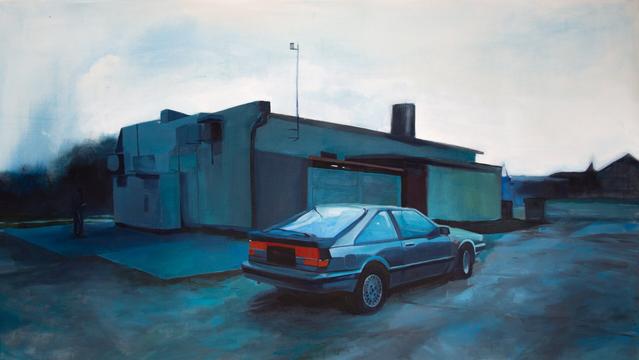making uszka with mayonnaise & raspberry kompott.
#EasternEuropean
#Idlo Ivanovitch Dans L’Ombre
They are from #Belgium but pretended that they came from the future from whatever #easternEuropean country, they arrived to #Canada through a #spacetime accident.
My Mister 🤖 and 20385gcck 🩻
#Groupe #electronicmusic #music #musique #belgiangroup #belgianartists #bruxelles
Olivier Salad (Salată de Boeuf): A traditional Romanian holiday salad with tender beef, crunchy veggies, and creamy mayo dressing. Festive and delicious! 🎄🥗
Get the recipe: https://www.joinyourlife4u.com/olivier-salad-salata-de-boeuf-traditionally-romanian/
#RomanianFood #HolidayRecipes #EasternEuropean #ComfortFood #PotatoSalad #FestiveDishes #Foodie #TraditionalRecipe #ChristmasFood #HomeCooking
He has no idea. He is geographically illiterate. Lookit this answer by Donald in the Zelensky Oval Office presser. Donald is bluffing his way through; winging it.
He has no idea but of course, he can't admit that; zero depth of knowledge.
It is so humiliating that THIS is the American president.
Friday, February 28, 2025
#ovaloffice #donaldtrump #zelensky #easterneuropean #ukraine #conman #grifter #americanpresident #disgrace #clueless
[08:28] Does Rotterdam’s approach to homeless East Europeans work?
Last summer, Rotterdam introduced an action plan to get homeless Eastern European migrants off the streets. The measures include shelter...
https://www.dutchnews.nl/2025/02/does-rotterdams-approach-to-homeless-east-europeans-work/
#Lastsummer #Rotterdam #EasternEuropean
Faubourg de Cracow, Warsaw, Russia (i.e. Warsaw, Poland) between ca. 1890 and ca. 1900. Views of architecture and other sites primarily in Poland, Russia, and the Ukraine
#FaubourgdeCracow #Warsaw #Russia #Poland #Ukraine #European #EasternEuropean #photography #historicalPhotos
Copernicus Monument, Warsaw, Russia (i.e. Warsaw, Poland) between ca. 1890 and ca. 1900. Views of architecture and other sites primarily in Poland, Russia, and the Ukraine
#CopernicusMonument #Warsaw #Russia #Poland #Ukraine #European #RussianOrthodox #EasternEuropean #Polish #photography #historicalPhotos
#malarstwo #painting #acrylicpainting #contemporarypainting #contemporaryart #art #postdigitalart #malarstwopolskie #digital #cyber #virtual #retrocomputer #retrocar #nostalgia #retroelectronics #retrotech #nissan #nissansilvia #s12 #retrofuturyzm #retrofuturism #doomer #easterneurope #easterneuropean #japanesecar #oldcar
View of Podol I, Kiev, Russia, (i.e., Ukraine) between ca. 1890 and ca. 1900. Views of architecture and other sites primarily in Poland, Russia, and the Ukraine
#Russia #Ukraine #Poland #Podoldistrict #EasternEuropean #theDnieperRiver #Russian #theRussianEmpire #photography #historicalPhotos
St. Michael Monastery, Kiev, Russia, (i.e., Ukraine) between ca. 1890 and ca. 1900. Views of architecture and other sites primarily in Poland, Russia, and the Ukraine
#StMichaelMonastery #Russia #Ukraine #Poland #StMichaels #UkrainianOrthodox #EasternEuropean #photography #historicalPhotos
La Lavra, Kiev, Russia, (i.e., Ukraine) between ca. 1890 and ca. 1900. Views of architecture and other sites primarily in Poland, Russia, and the Ukraine
#LaLavra #Russia #Ukraine #Poland #EasternOrthodox #Christian #PZKiew #EasternEuropean #photography #historicalPhotos
La Lavra, Kiev, Russia, (i.e., Ukraine) between ca. 1890 and ca. 1900. Views of architecture and other sites primarily in Poland, Russia, and the Ukraine
#LaLavra #Russia #Ukraine #Poland #EasternEuropean #Orthodox #photography #historicalPhotos
Moscou. Le Kremlin between ca. 1890 and ca. 1900. Views of architecture and other sites primarily in Poland, Russia, and the Ukraine
#Moscou #LeKremlin #Poland #Russia #Ukraine #Moscow #Kremlin #Russian #EasternEuropean #photography #historicalPhotos
@sativa@cyberpunk.lol my friends keep telling me “vivi just use a mute list” and “vivi you are off the perc with this multiple people shit go see a therapist” but the problem is that my system runs me as a coop and will vote on things like this and every time i put going to a therapist up for a vote it never passes, because two of them hate #easterneuropeans and want to see me suffer, one is #easterneuropean but from a different country so she hates me too, one doesnt believe in therapy because he listens to too much redpill podcasts, one doesnt believe in democracy because shes a stalinist and one does want me to go to therapy but they have severe #adhd so they usually forget to show up for council meetings
Bord met geschilderde reproductie van Rembrandts 'Poolse edelman', vermoedelijk op een rommelmarkt in Amsterdam, Ed van der Elsken, c. 1955 - c. 1970
#vanRembrandts #Poolse #Amsterdam #EdvanderElsken #Rembrandt #EasternEuropean #Poland #fotografie #photography #EdVanDerElsken #EdvanderElsken
Hammersdorf, Hermmanstadt (i.e., Hermannstadt), Hungary, Austro-Hungary between ca. 1890 and ca. 1900. Views of the Austro-Hungarian Empire
#Hammersdorf #Hermmanstadt #Hungary #Austro #EasternEuropean #photography #historicalPhotos
Don’t let them make you forget who your real enemy is!
They will lay low for months. Meanwhile, Trump will do something ridiculous, and you will start fighting each other again.
Don’t forget! March, protest, write posts and ask democrats what they plan to do with the healthcare system. Do everything not to forget!
#USPol #ClassWar #EasternEuropean with opinion 😀
4/4
Konjica, general view, Herzegowina, Austro-Hungary between ca. 1890 and ca. 1900. Views of the Austro-Hungarian Empire
#Konjica #Herzegowina #Austro #EasternEuropean #Hungary #Austro-Hungarys #Herzegovina #photography #historicalPhotos
Sarajcvo (i.e., Sarajevo), from the north, Bosnia, Austro-Hungary between ca. 1890 and ca. 1900. Views of the Austro-Hungarian Empire
#Sarajevo #Bosnia #Austro #EasternEuropean #Europe #photography #historicalPhotos
